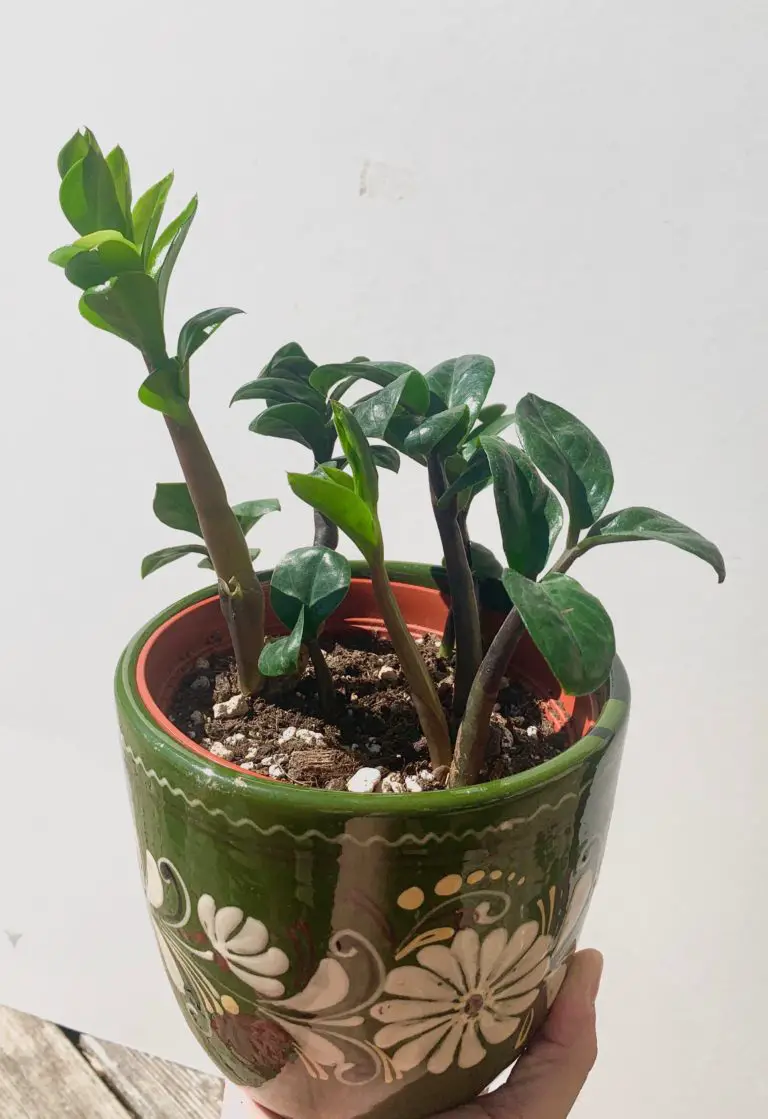Zamioculcas Zamiifolia
Botanical Name: Zamioculcas Zamiifolia
Common Name: ZZ Plant, Zanzibar Gem, ZZ
Family: Araceae
About Zamioculcas Zamiifolia
Popular for their ease of care and adaptability to low light conditions, the Zanzibar Gem has been a houseplant staple for many years. Their succulent leaves and thick, dark green stems paired with rhizome roots mean this plant is also drought tolerant, making it perfect for less frequented low light areas. Zamioculcas Zamiifolia can be found in their natural habitat of semi-arid grasslands and forests throughout Eastern Africa. They can grow up to around 4 feet tall and if allowed to will spread equally as wide or further. The new growth appears as a green spike from the base of the plant, when a new stem emerges all the leaves are already present and will slowly unfold once the stem has fully grown.
Light
While ZZ Plants are widely known for their low light adaptability the ideal light for the plant is medium indirect light. ZZ will grow faster and more robust when given medium indirect light. If you place your ZZ in a very low light setting expect your plant to grow extremely slowly and while they can survive with almost no light the opposite end of the spectrum will damage your plant. Zamioculcas Zamiifolia does not tolerate direct sun. The dark green foliage on this plant will burn quickly if exposed to direct sunlight.
Water
Less is more with the ZZ Plant. A highly drought-tolerant specimen, Zamioculcas Zamiifolia can go weeks without water and will be fine. I tend to water mine about every two or so weeks in the warmer months and every three to four weeks in winter depending on how quickly the soil dries out.
Overwatering is just about the only way you can kill off your ZZ Plant, it is recommended to check the moisture level of your plants’ soil before watering. If there is any moisture in your ZZs soil hold off on watering for at least another week to avoid any possibilities of root rot.

Humidity & Temperature
As ZZ Plants are used to a semi-arid climate in their natural habitat average indoor humidity will do just fine for this plant. Just try and keep your relative humidity at or around 40%. It is a good idea to avoid placing your ZZ near heating vents or in the path of your A/C, otherwise, you don’t need to fret about the humidity for this plant.
As far as temperature preferences go the Zanzibar Gem prefers it on the warm side, the ideal temperature range is between 60 and 80 degrees Fahrenheit. Your ZZ mustn’t be exposed to temperatures below 50 – 55 degrees Fahrenheit, if your ZZ is exposed to such temps it will cause the plant to drop leaves before going completely dormant and dying off.
Toxicity
Zamioculcas Zamiifolia (ZZ plant) is toxic to both cats and dogs. The plant may cause difficulty swallowing, discomfort, and vomiting in pets. According to the University of Florida all parts of the plant are toxic. If you have curious pets it’s best to place your ZZ far out of reach.
Just as they are to pets, all parts of this plant are toxic to humans as well, irritating the mouth and stomach if ingested.
Tips
If you are in the market for a plant that can survive in a room without natural light ZZ may be your best bet, they are known to survive for years off of fluorescent lighting in offices!
ZZ Plants can be easily propagated, either by rhizome/root division or by simply cutting a whole or partial leaf from the plant. If you cut a leaf from your plant, allow it to callus briefly before placing it about one-quarter of the way into a pot of moist soil. Until the leaf-cutting has sufficient roots keep the soil it is placed in slightly moist.
In my home, I have noticed these plants leaves are dust magnets. I would suggest dusting your ZZ Plants foliage almost weekly to ensure it can photosynthesis as much as possible, this is especially important in a low light environment
Frequently asked questions
What is the best soil mix for a ZZ Plant?
While the ZZ Plant doesn’t require special soil it will do best with a fast-draining mix. I would suggest a mic with equal parts perlite, peat moss, and compost. To ensure your plant grows as robust and strong as possible, spread a thin layer of worm castings or slow-release fertilizer over the soil once you have potted your ZZ Plant with its new medium.
Can ZZ Plants survive in a room without natural light/windows?
Depends. In most cases (at least for a finite time) the answer is yes. Given fluorescent lighting or an overhead light with a grow bulb in it, ZZ Plants will do just fine. Just make sure to water very sparingly to avoid any root rot. ZZ Plants will not live very long if placed in a windowless room that also lacks artificial lighting.